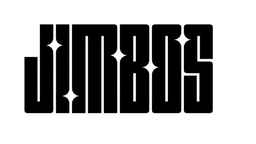The Best Pads for Paint Correction (and When to Use Each One)
Choosing the right pad is just as important as choosing the right polish. Whether you're correcting heavy swirls or finishing out soft black paint, the right pad makes all the difference in your results. This guide breaks down the different types of pads, what they do, and how to match them with your polish for max results.
Types of Paint Correction Pads
1. Heavy Cutting Pads
Purpose: Remove deep swirls, oxidation, and defects fast
- Usually made of firm foam or microfiber
- Pair with compounds or aggressive one-steps
- Use on harder paints or vehicles with heavy neglect
Great with: Rotary or long-throw DA machines + compound or Picture Perfect Polish for extra bite
2. Polishing Pads (Medium Cut)
Purpose: Correct light-to-moderate swirls while finishing clean
- Balanced foam density—enough cut, but still smooth
- Perfect for one-step polish sessions
- Ideal for daily drivers or ceramic prep details
Great with: Dual-action polishers + Picture Perfect Polish in a single-step pass
3. Finishing Pads
Purpose: Maximize gloss, clarity, and remove micro-hazing
- Very soft foam designed to lay down a perfect finish
- Used after a cutting step or for refining on soft paints
- Great for black, red, and dark metallics
Great with: Fine finishing polishes or one-step polish used with low pressure
How to Choose the Right Pad
- Do a test spot: Start with a polishing pad and evaluate. Step up to cutting only if needed.
- Match pad to paint type: Soft paint = gentler pad. Hard paint = more aggressive pad.
- Use pad color coding: Most pad brands follow a system (e.g., red = finishing, orange = medium, blue = heavy)
Pro Tip
If you're using Picture Perfect Polish, try adjusting just your pad before changing polish. This formula adapts well to different pads, giving you flexibility without needing a full compound lineup.
Pad Maintenance Tips
- Use compressed air or a pad brush between sections to clean on-the-fly
- Wash pads with warm water and pad cleaner after every job
- Never let pads sit with polish dried in—this ruins foam structure
Final Thoughts
The pad you use directly affects the level of correction, finish quality, and overall effort required. Don’t just grab any pad—dial in your setup with the right one, and your results will speak for themselves.
Use Picture Perfect Polish with Your Favorite Pads



